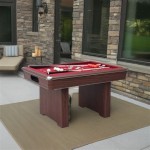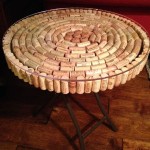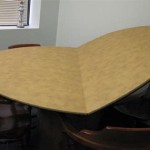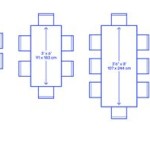Table Decorations For Wedding Receptions
Wedding receptions represent a culmination of meticulous planning and personalized details, with table decorations playing a paramount role in establishing the desired ambiance and aesthetic. The carefully curated elements adorning each table contribute significantly to the overall guest experience, enhancing the sense of celebration and commemorating the union of the couple. This article explores various aspects of table decorations for wedding receptions, providing insights into considerations, styles, and specific elements that contribute to a cohesive and memorable event.
The selection of table decorations should align seamlessly with the overall wedding theme and color palette. Consistency in design elements across all aspects of the wedding, from invitations to floral arrangements, creates a harmonious and visually appealing experience for guests. Careful consideration of the venue's existing décor, including its architectural style and color scheme, is essential to ensure that the table decorations complement rather than clash with the surroundings.
Key Considerations in Planning Table Decorations
Several fundamental factors influence the selection and arrangement of table decorations. These considerations ensure that the chosen elements are not only aesthetically pleasing but also practical and conducive to a comfortable guest experience. The following points represent crucial aspects to address during the planning process.
Budget Allocation: Establishing a realistic budget for table decorations is crucial. The budget should encompass all elements, including linens, centerpieces, place settings, and any additional decorative items. Prioritizing elements and exploring cost-effective alternatives can help to maximize the impact while staying within financial constraints. DIY options, rental services, and strategic sourcing of materials can offer significant cost savings without compromising on quality or aesthetic appeal.
Table Size and Shape: The dimensions and configuration of the tables significantly influence the selection and arrangement of decorations. Round tables generally lend themselves to more symmetrical centerpieces, while rectangular tables offer greater flexibility in terms of linear arrangements. The height of the centerpieces must also be carefully considered, ensuring that they do not obstruct guests' views or hinder conversation. Measurements should be taken prior to finalizing décor choices to ensure proper scale and proportion.
Guest Comfort and Functionality: While aesthetics are important, the primary purpose of a wedding reception is guest enjoyment. Table decorations should never impede conversation, restrict movement, or interfere with the dining experience. Centerpieces should be appropriately sized and positioned to allow for clear sightlines across the table. Sufficient space should be available for place settings, glassware, and serving dishes. The comfort and convenience of guests should always take precedence over purely decorative considerations. Avoid heavily scented flowers or candles that may trigger allergies or sensitivities.
Styles and Themes for Table Decorations
The choice of style or theme for table decorations should reflect the personalities of the couple and the overall ambiance they wish to create. From classic elegance to rustic charm, numerous options exist to suit diverse tastes and preferences. The following styles represent a selection of popular choices, each offering a unique aesthetic and set of design possibilities.
Classic Elegance: This style emphasizes timeless sophistication and refined details. A classic elegant table setting typically features crisp white linens, polished silverware, crystal glassware, and understated floral arrangements. Centerpieces often incorporate classic flowers such as roses, lilies, or hydrangeas in elegant vases or urns. Candlelight plays a crucial role in creating a warm and romantic atmosphere. The color palette typically consists of neutral tones, such as white, ivory, and gold, with subtle accents of color.
Rustic Charm: Rustic themes evoke a sense of natural beauty and relaxed informality. Table decorations in this style often incorporate elements such as burlap, wood, mason jars, and wildflowers. Centerpieces may feature arrangements of dried flowers, branches, or succulents. Candles in rustic holders, such as lanterns or wooden boxes, add to the warm and inviting ambiance. The color palette typically includes earthy tones, such as brown, green, and beige, with pops of color from wildflowers or seasonal foliage.
Modern Minimalism: This style embraces clean lines, simple shapes, and a focus on functionality. Table decorations are typically understated and uncluttered, with an emphasis on quality materials and subtle details. Centerpieces may feature geometric shapes, single-stem flowers, or minimalist candle arrangements. The color palette typically consists of neutral tones, such as white, gray, and black, with occasional pops of color. The overall effect is one of understated elegance and contemporary sophistication.
Bohemian Chic: Bohemian themes celebrate individuality, creativity, and a free-spirited aesthetic. Table decorations often incorporate eclectic elements, such as vintage glassware, macramé runners, and colorful textiles. Centerpieces may feature arrangements of exotic flowers, feathers, or crystals. Candles in mismatched holders add to the relaxed and bohemian vibe. The color palette is typically vibrant and eclectic, with a mix of bold colors, patterns, and textures.
Beach or Coastal: For couples who love the ocean, a beach or coastal theme can create a relaxed and picturesque atmosphere. Table decorations may incorporate elements such as seashells, starfish, sand, and driftwood. Centerpieces may feature arrangements of seagrass, coral, or nautical-themed accents. The color palette typically consists of blue, white, and sand tones, evoking the colors of the sea and sky. Linen napkins tied with twine and small nautical charms enhance the theme.
Specific Elements of Table Decorations
The individual components that comprise a table setting collectively contribute to the overall aesthetic and create a cohesive and visually appealing arrangement. Careful selection and coordination of these elements are essential for achieving the desired effect. The following points detail key elements to consider when planning table decorations.
Linens (Tablecloths and Napkins): Linens serve as the foundation for the entire table setting, providing a backdrop for the other decorative elements. The choice of fabric, color, and texture can significantly impact the overall aesthetic. Crisp white linens are a classic choice for formal events, while colored or patterned linens can add personality and visual interest. The size of the tablecloth should be appropriate for the table, with a consistent drop on all sides. Napkins should complement the tablecloth and can be folded in a variety of styles to add a touch of elegance.
Centerpieces (Floral and Non-Floral): Centerpieces are the focal point of each table, drawing the eye and establishing the overall style. Floral centerpieces are a popular choice, but non-floral options, such as candles, lanterns, or sculptures, can also be equally effective. The height, size, and style of the centerpiece should be carefully considered, taking into account the table size and shape. The choice of flowers, colors, and materials should align with the overall wedding theme. For non-floral centerpieces, ensure they complement the chosen theme and are visually appealing.
Place Settings (Plates, Silverware, and Glassware): The selection of plates, silverware, and glassware contributes to the overall elegance and sophistication of the table setting. Fine china, polished silverware, and crystal glassware are traditional choices for formal events, while more casual options, such as stoneware plates and stainless steel silverware, may be suitable for less formal occasions. The arrangement of the place settings should be neat and symmetrical, with each item placed according to proper etiquette. Consider the overall style and theme when selecting the place settings to ensure they complement the other decorative elements.
Charger Plates: Charger plates are decorative plates placed beneath the dinner plate, adding a layer of elegance and formality to the table setting. They are typically made of metal, glass, or wood and can be chosen to complement the overall color palette and style of the event. Charger plates are removed after the appetizer or salad course, but they serve as a visual anchor throughout the meal. The selection of charger plates can significantly enhance the overall aesthetic of the table setting.
Candles and Lighting: Candles and lighting are essential for creating a warm, romantic, and inviting atmosphere. Candles can be incorporated into centerpieces, placed in individual holders, or arranged in clusters on the table. The type of candle, such as taper candles, votive candles, or pillar candles, should be chosen to complement the overall style of the event. String lights, fairy lights, or spotlights can also be used to add ambient lighting and highlight specific decorative elements. Consider the safety aspects of candle placement and ensure adequate ventilation.
Table Runners and Overlays: Table runners and overlays are decorative fabrics that are placed on top of the tablecloth, adding texture, color, and visual interest to the table setting. Table runners can be placed lengthwise down the center of the table or across the width of the table. Overlays can be used to cover a portion of the tablecloth, creating a layered effect. The choice of fabric, color, and pattern should complement the overall wedding theme and the other decorative elements. Table runners and overlays can be used to add a touch of elegance, rustic charm, or bohemian flair to the table setting.
Place Cards or Escort Cards: Place cards or escort cards are used to direct guests to their assigned tables and seats. They can be simple and elegant or creative and personalized. The design of the place cards or escort cards should align with the overall wedding theme and the other decorative elements. Calligraphy, handwritten fonts, or custom designs can add a touch of elegance and personalization. Consider incorporating small decorative elements, such as ribbons, charms, or flowers, to enhance the visual appeal of the place cards or escort cards.
Favors: Wedding favors are small gifts given to guests as a token of appreciation. They can be placed on the table at each place setting or displayed on a separate table. The favors should be thoughtful and memorable, reflecting the personalities of the couple and the overall wedding theme. Popular favor options include personalized items, edible treats, small plants, or charitable donations. The presentation of the favors should be attractive and consistent with the overall style of the event. Consider tying a ribbon around each favor that matches the wedding colors or include a small tag with a thank you message.
:max_bytes(150000):strip_icc()/PHOTOBYKTMERRY-196977c30320439db6bcbf673d174571.jpg?strip=all)
48 Centerpiece Ideas For Any Wedding Style

Tips For Choosing Rustic Wedding Table Decorations Organic Events Supply Co

50 Stunning Wedding Table Decor Ideas For Better Worse
:max_bytes(150000):strip_icc()/ashley-and-douglas-wedding-29-70e1f95ca3764bbf82749876c01a1b0a.jpg?strip=all)
48 Centerpiece Ideas For Any Wedding Style

How To Decorate Wedding Tables 50 Table Decoration Ideas Hitched Co

Simple Table Decorating Ideas For Wedding Receptions Lovetoknow

Outstanding Wedding Table Decorations Forward

50 Stunning Wedding Table Decor Ideas For Better Worse

How To Decorate Wedding Tables 50 Table Decoration Ideas Hitched Co

Unforgettable Wedding Reception Table Decor The Gardens Of Castle Rock
Related Posts








